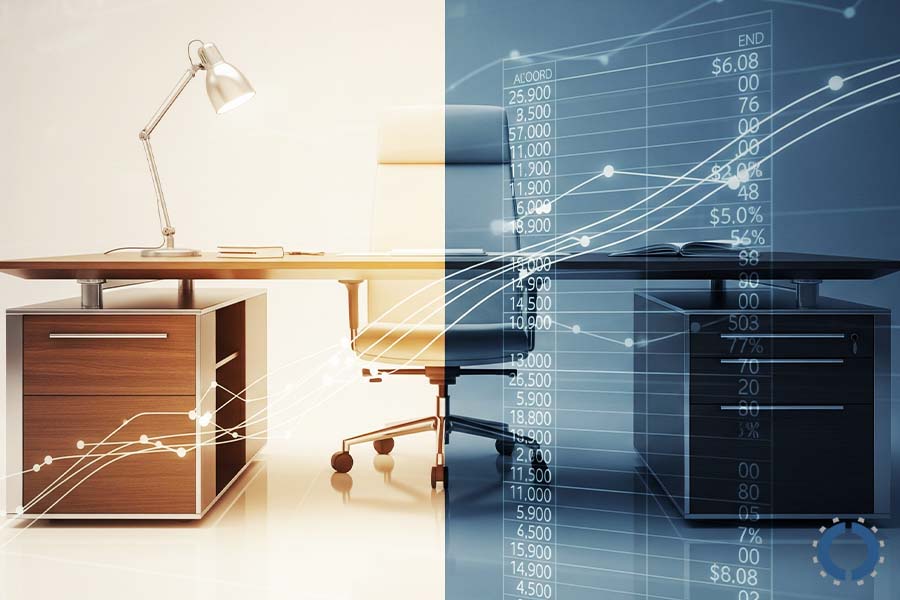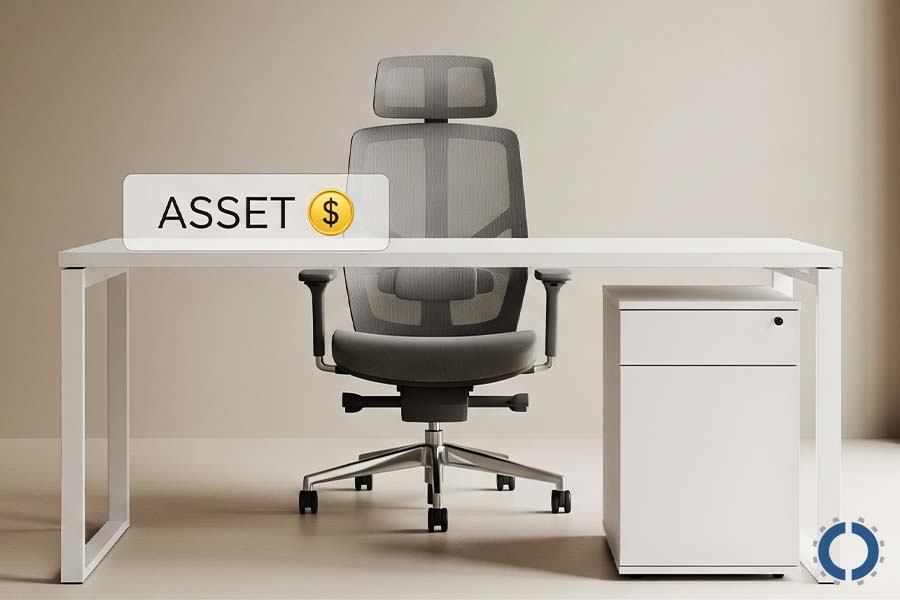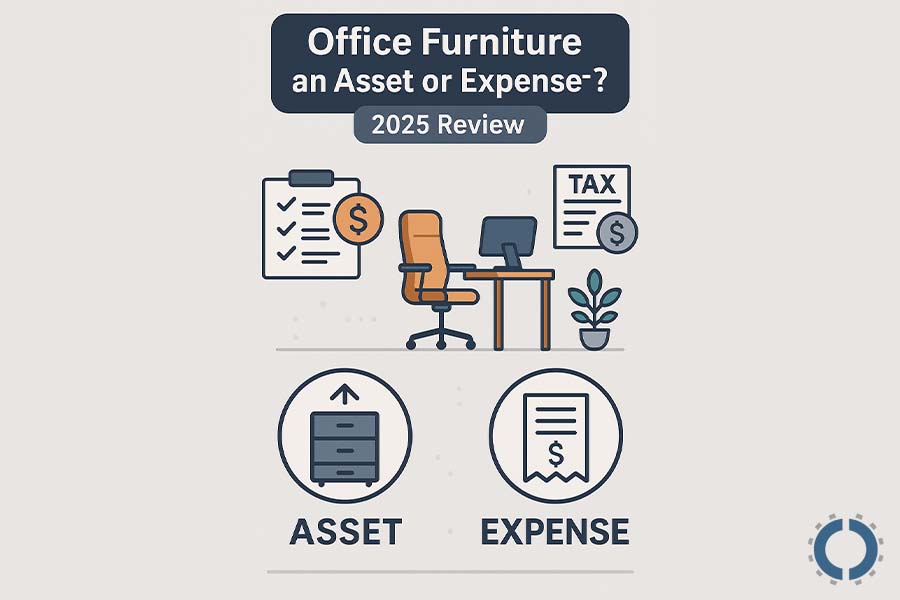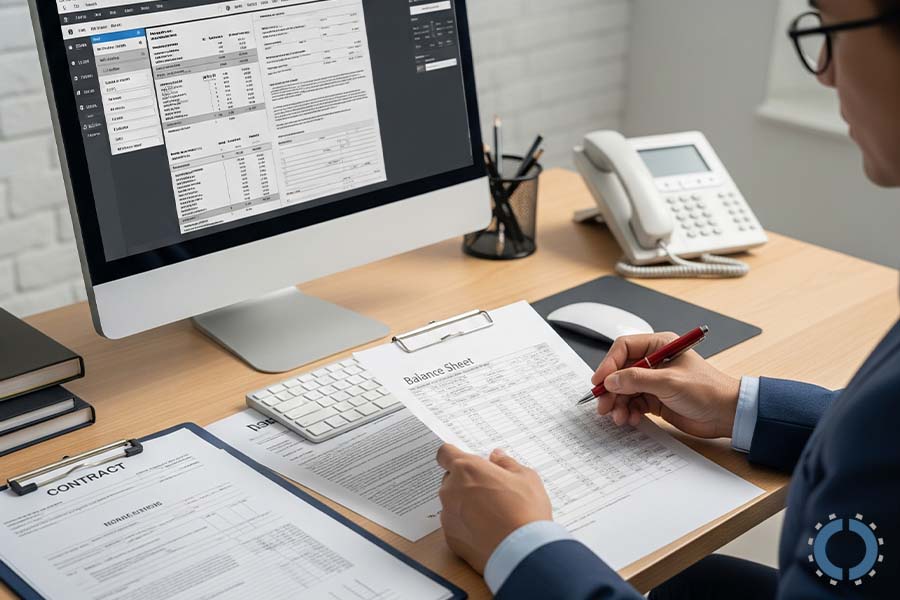Is Office Furniture An Asset Or Expense? 2025 Review

In today’s dynamic business world, office furniture plays a vital role in productivity, branding, and even employee morale.
But from an accounting and tax perspective, one of the fundamental questions for any business is whether office furniture should be classified as an “asset” or an “expense”?
In short, in 2025, the classification of office furniture as an asset or expense will depend on several factors, including purchase cost, expected useful life, and current tax and accounting laws.
In 2025, office furniture is considered a capital asset if it has a useful life of over one year and costs above your accounting threshold. It’s expensed gradually through depreciation. But small purchases under the threshold can be expensed immediately.
The answer to this question will have significant implications for your company’s financial statements, tax liabilities, and long-term strategic planning, especially given the 2025 tax changes and considerations.
In this article, we will take a closer look at these factors to help you make an informed decision that is in your business’s financial best interest this year.
Let’s see if office furniture is an asset or an expense.
Definition of an Asset
In accounting, an asset is an item with a useful life of more than one year, owned or controlled by a company, and expected to generate financial benefits for it in the future.
Office furniture, such as desks, chairs, filing cabinets, and filing cabinets, is usually classified as fixed assets because it is used for a long time and contributes to the revenue generation process.
Also, assets are recorded on the company’s statement of financial position (balance sheet) and represent the company’s investment and financial strength.
Definition of an Expense
In accounting, an expense refers to the expenses that a business pays to carry out its day-to-day activities and maintain its revenue-generating process.
These expenses are fully deducted from income in the same financial period in which they occur, are an integral part of the company’s normal operations, and are vital to its continued activity.
Expenses can include things like employee salaries, rent, bills, and the cost of purchasing raw materials or services.
These types of expenses are usually deducted from the company’s income and recorded in the income statement in the same fiscal year in which they occur.
When and Why Office Furniture Is an Asset?

If office furniture has a long life and significant value and is used in the company’s operational activities, then it is classified as a capital asset and not a current expense.
This classification allows the company to benefit from long-term tax benefits and manage expenses more rationally over time.
This classification affects the way financial statements are prepared, depreciation is calculated, and tax benefits are enjoyed.
In financial accounting, office furniture is recognized as an asset if it meets certain criteria.
- Capitalization: Furniture is recorded as an asset when the company recognizes it as a long-term asset according to its accounting policies.
Its useful life should be more than one year.
Also, its price should be above a certain threshold.
For example, in many companies or according to the IRS, this threshold maybe $2,500.
(Items below this threshold are usually recorded as direct expenses in the same year.)
Expensive purchases such as executive desks, conference tables, or specialized office equipment usually qualify for recording as assets.
- Depreciation: Unlike current expenses, which are fully deducted from income in the same year, assets like furniture are depreciated over several years.
Depreciation means spreading the cost of an asset over its useful life, which prevents the purchase cost from being overwhelming in one year.
It also helps the company spread its tax burden over several years, making cash flow more manageable.
Depreciation reduces taxable income, resulting in less tax paid.
When and Why Office Furniture Is an Expense?
Office furniture is usually recorded as an asset, but under certain circumstances, it can be reported directly as an expense in the same year of purchase.
These circumstances are as follows:

- Purchases below a threshold: According to IRS regulations, if the price of any office furniture item is below a certain threshold, the company can record it as a current expense in the same year, rather than an asset.
This simplifies accounting, reduces the complexity of depreciation, and speeds up the recognition of expenses.
- Short-term or Leased Furniture: If the furniture is purchased or leased for a short period of time, it is usually recorded as a periodic expense in the same year, as it is not a long-term asset.
Therefore, the installments or amounts paid for the lease are recorded in the income statement as a periodic expense, such as a monthly or quarterly expense.
In this case, no asset is created on the balance sheet, but rather an expense liability is reported on the income statement.
Under Section 179 of the U.S. federal tax law, businesses can deduct the full cost of certain assets, including office furniture, from income in the same year of purchase.
This possibility helps to recognize the entire purchase amount as an expense in the same year instead of multi-year depreciation.
Factors That Decide Whether Office Furniture Is an Asset or Expense In 2025
In accounting, whether office furniture is recorded as an “asset” or an “expense” depends on various factors.
Each of these factors can determine whether furniture should be recorded on the Balance Sheet or the Profit and Loss Statement.
Analyzing these factors helps companies make optimal decisions regarding accounting records and the use of tax benefits.
1. Cost of Furniture
If the price of furniture is high and exceeds a threshold set in the company’s accounting policies or tax laws, it is usually classified as a capital asset.
In this case, the cost will be spread over the next few years through depreciation.
If the price of furniture is low, especially in small companies, it is usually recorded as a current expense in the same year, as there is no accounting value in recording and tracking depreciation for such items.
2. Business Size and Type
The classification of office furniture as an asset or expense varies depending on the size of the business.
In large, complex companies, most items are recorded as capital assets because they are important for financial reporting and auditing purposes.
Large businesses also record office furniture as a long-term asset due to the need for high-quality furniture and its long-term use.
Small businesses often record low- or even moderate-priced furniture as an expense due to financial simplicity and resource constraints to reduce accounting burden and take advantage of immediate tax benefits.

3. Expected Lifespan
Furniture that is expected to be used for more than one year, such as executive desks or permanent cabinets, is considered an asset.
In contrast, if furniture is purchased for temporary projects or short-term use, it can be treated as a current expense in the same year.
4. Financing Method
If furniture is purchased in cash or with long-term payment and definite ownership, it is often recognized as a fixed asset.
If the furniture is leased to the company, especially under an operating lease, it is usually recorded as an expense because actual ownership is not transferred.
5. Tax Laws and Accounting Regulations in 2025
In 2025, tax laws like Section 179 and Bonus Depreciation will still allow companies to deduct part or all of the cost of purchasing assets like furniture in the same year.
Changes in accounting standards can also affect how assets and expenses are classified.
For example, some leases may be recorded as a Right-of-Use Asset instead of an expense under the new standards.
Key Considerations for Businesses in 2025
With changes to tax laws and accounting requirements coming into effect in 2025, businesses will need to more carefully decide how to classify and report assets like office furniture.
Paying attention to the following can be very effective in reducing taxes, improving cash flow, and increasing financial transparency.
1. Navigating Tax Laws
According to tax law updates in 2025, Section 179 allows companies to deduct certain assets, such as office furniture, from income in full in the same year they are purchased.
In 2025, the Section 179 deduction cap will increase to about $1,220,000, which is a good opportunity for small and medium-sized businesses to reduce taxes.
2. Bonus Depreciation
Until the end of 2025, it is possible to use bonus depreciation for some assets, meaning you can deduct 40% of the cost of the asset in the very first year.
Planning when to purchase assets, determining which assets are eligible for immediate deductions, and utilizing Section 179 and bonus depreciation simultaneously can significantly reduce a company’s tax liability.
It is recommended that companies work with a tax advisor to maximize legal benefits.
3. Accounting Accuracy

To take advantage of Section 179, or depreciation, companies must accurately record the purchase receipt, invoice, date of use, and useful life of the asset.
Incorrect or incomplete accounting can cause expenses to be rejected in IRS tax audits.
Companies must ensure that rules regarding asset registration, depreciation, and leases are followed by updated IRS regulations.
It is very important to maintain supporting documents, and contracts, and correctly identify expenses and assets on the balance sheet.
5. Impact on Financial Statements
If office furniture is recorded as an asset, it is shown on the balance sheet and gradually entered into the income statement through depreciation.
In contrast, if it is recorded as an expense, it directly affects net income in the same year.
Proper asset classification can provide investors and banks with a more accurate picture of a company’s financial position.
Also, proper management of assets and expenses in financial statements increases transparency, credibility, and regulatory compliance.
Home Office Deductions
If you use your home for business activities, you may be able to claim a portion of the cost of office furniture as a tax deduction, but you must meet certain conditions:
- Regular and Exclusive Use: The space must be used exclusively and regularly for work or business and not for personal or mixed-use.
- The main center of activity: That space should serve as your main place of business or a place where you meet with clients regularly.
- Correct recording of expenses: By properly recording expenses, purchasing furniture for this space, such as ergonomic office chairs, office desks, shelves, etc., can be deducted from taxes through Section 179 or multi-year depreciation.
- Use of simple or exact method: The IRS offers two methods:
- Simple Method: A flat rate per square foot (without calculating exact expenses).
- Detailed Method: Based on the percentage of business use of the home and detailed documentation of expenses.
These deductions will remain in place in 2025, but only for self-employed individuals or home business owners.
If you are an employee and work from home, you are generally not eligible.
Top Solutions for Office Furniture Accounting Management
- Get Professional Financial Advice
To make the right decision about recording office furniture as an asset or expense, be sure to consult a certified accountant or financial advisor.
Their expertise in understanding new tax and depreciation laws prevents costly mistakes and helps optimize taxes.
- Using Specialized Accounting Software
Asset management and accounting software allow businesses to automatically calculate and record the value, useful life, and depreciation expense of furniture.
These tools increase accuracy, save time, and improve financial transparency.

- Accurate Documentation of Expenses and Assets
All details regarding the purchase, installation, and use of office furniture must be properly recorded.
Information such as purchase date, amount paid, installation method, and depreciation method plays a key role in preparing financial reports and responding to tax audits.
- Evaluating Renting vs. Buying
The decision between renting or purchasing furniture should be based on the budget, operational needs, and financial policy of the business.
Buying brings long-term ownership and is subject to depreciation benefits, while leasing can ease cash flow pressures and settle expenses periodically.
Conclusion
Deciding whether to classify office furniture as an “asset” or an “expense” in 2025 depends on several factors, including the purchase price, expected lifespan, financing method, type of business, and 2025 tax laws.
There is no one-size-fits-all answer; the right choice must be made based on each business’s financial goals, accounting policies, and specific circumstances.
There is no one-size-fits-all answer for all businesses; the right choice should be made based on each business’s financial goals, accounting policies, and specific circumstances.
This classification is not just an accounting decision, but a strategic choice that can have a significant impact on your balance sheet, income statement, cash flow, and even the taxes you pay.
In this article, we explained whether office furniture is an asset or an expense and what conditions apply to each so that you can make an informed decision.

John Ofield is the owner of Collaborative Office Interiors. Houston’s trusted source for modern and commercial office furniture, office cubicles, demountable walls, office desks and tables, and complete workspace solutions. With more than 40 years of experience, he combines deep product knowledge with hands-on space-planning expertise to create ergonomic, productivity-focused work environments for businesses across Southeast Texas.


